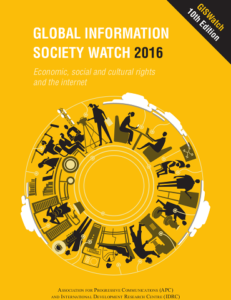Author: Arthur Minasyan and Olya Azatyan

GISWatch 2016 – Economic, Social and Cultural rights (ESCRs) and the internet
Introduction
In spite of the fact that economic, social and cultural rights (ESCRs) in Armenia are guaranteed by the Armenian constitution 1 as well as by the International Covenant on Economic, Social and Cultural Rights (ICESCR), which Armenia ratified in June 1993, recent Amnesty International 2 and Human Rights Watch 3 reports highlight that discrimination against lesbian, gay, bisexual, transgender, queer and intersex (LGBTQI) individuals is a concern. This is particularly the case in the absence of gender-specific anti-discrimination legislation and amid widespread reports of hate speech. Armenia lacks any internet-related legislation and this area is out of the government’s “direct and lawful” control.
This report suggests how active discrimination against any group is the first barrier that needs to be overcome for a country to fully realise its obligations to the ESCR covenant.
Internet access in Armenia
The Armenian internet space has been successfully expanding in the last several years. According to General Data for Armenia 2016 Quarter 2 4 country statistics, the total number of internet subscriptions stands at 2,155,428 out of a population of 2.9 million. The number of subscriptions has increased by 28,712 since 2014. The report puts broadband subscriptions at 261,784 (up 15,395 since 2014), mobile broadband subscriptions at 231,698 (down 25,912 since 2014), and mobile phone internet users at 1,661,946 (up 39,229 from 2014). Currently there are five companies which provide an international internet gateway to Armenia, while there are 71 internet service providers (ISPs) operating in the country. The number of daily Facebook users is 650,000, with a total of one million people registered on the social media site. While there are 110,000 Instagram users, Twitter is not widely used. Several online media platforms, especially Facebook and YouTube, have become quick, first-hand information sources for Armenians. Social media has opened up the potential for citizen journalism in the country. Activists, NGOs and sometimes even opposition parties also use social media on a daily basis for their campaigns, to organise events, and to live stream.
